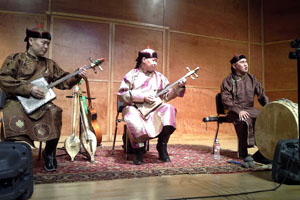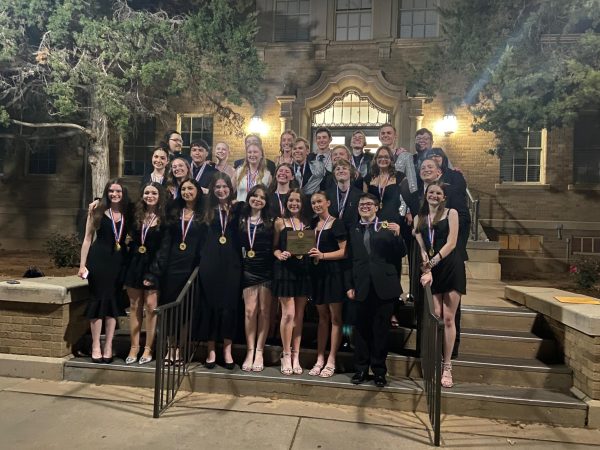Geography students attend throat singing concert
 A Tuvan throat singing ensemble called Alash performed at the WT Fine Arts center Tuesday night.
A Tuvan throat singing ensemble called Alash performed at the WT Fine Arts center Tuesday night.
Students in Mrs. Weston’s geography class were encouraged to attend the concert because Weston saw Alash in Siberia last summer. 45 Randall students were there. WT, Amarillo, and Canyon students were also in attendance.
“I was overwhelmed by the number of students I had turn out,” Weston said. “Alash told me they were energized by our enthusiasm. My students sat on the floor in front of the stage due to lack of space. They loved the energy we brought to the concert! In fact, (their road manager) told me this was the best audience they had experienced on the tour. He was really pumped. “
According to Weston, Associate Professor Dr. Elizabeth Clark was “instrumental” in setting up the grant that allowed Alash to stop in Canyon on their tour. They came from New York and went to Austin after their concert here.
“Alash made a special stop at West Texas A&M because of the connection we made with them during our trip to Siberia,” Weston said. “Alash’s home base of operation is Kyzyl, Russia, Republic of Tuva. Their road manager, Sean Quirk, is friends with some of the people I went with on our Russia trip (Siberian Voices). Sean is originally from Wisconsin.”
Throat singing is a style in which they are able to produce more than one tone simultaneously. The singer starts with a low drone. Then, he breaks up the sound, amplifying one or more overtones enough so that they can be heard as additional pitches while the drone continues at a lower volume.
“The open landscpe of Tuva allows for the sounds the herders make to carry great distances,” Weston said. “The art of throat singing is an integral part of the ancient pastoral animism still practiced today by semi-nomadic herds. Throat singers have developed many instruments and techniques to mimic the sounds of animals, wind and water.”
According to their website, Alash uses a two-stringed instrument called an igil, a banjo-like instrument called a doshpuluu, a long flute called a shoor, and percussion instruments such as the kengirge, duyuglar, and a shyngyrash.
“Throat singing is truly such a unique sound one has to experience it to try and explain it…even then, I find words inadequate,” Weston said.









